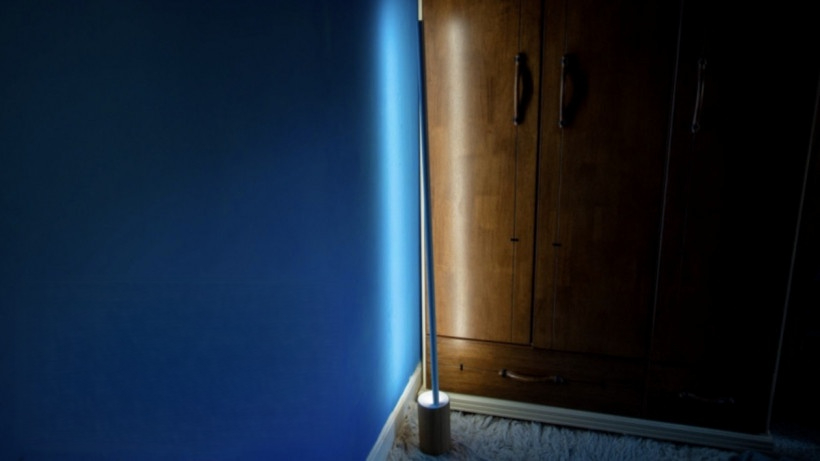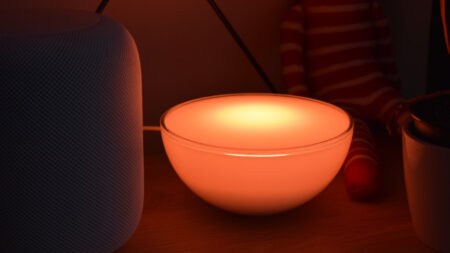Project a rainbow with this stylish smart light
While the ambience is one thing, the Hue Gradient Signe Floor Lamp is bright enough to be a utility light, too. Placing it behind a chair and using one of the more standard Hue lighting colors (Concentrate or Read, for example), the lamp is bright enough to read by and work, too. That’s important, as buying a light as expensive as this just to create a light show could be hard to justify; buying a light that can add ambience and is useful as an actual light is much easier to do.
Pros
- Bright
- Excellent color blending
- Simple to control
- Compatible with all Hue controls
Cons
- Quite expensive
- No onboard controls
- Relies heavily on Hue app
Although the dominant force in smart lighting, with the widest choice of lights and controls, Philips Hue has slightly fallen behind the competition when it comes to gradient lights, which can show multiple colors at once.
That changes now with the launch of the Philips Hue Gradient Signe Floor Lamp.
I’ve got the floor-standing model (from $329 / £279) on review here, although there’s also a slightly shorter desk lamp available (from $219 / £189), too.
Read on to find out whether it’s the smart lamp for you in our full Philips Hue Gradient Signe Floor Lamp review…
Philips Hue guides
- Learn: How to connect and set up Philips Hue
- Do more: Philips Hue sync explained
- Go further: Best Philips Hue apps
Hue Gradient Signe Floor Lamp: Design and setup
Effectively, the Philips Hue Gradient Signe Floor Lamp is a gradient light strip housed in an upright stand, kitted out with a base.
The difference with this product, compared to the competition, such as the Govee Lyra, is that the Signe comes pre-built.
It’s a far neater solution. With the Lyra, the installation is a bit fiddly, and there’s a gap between the lightstrip and the base. As Philips has built this product from scratch, everything fits together better.
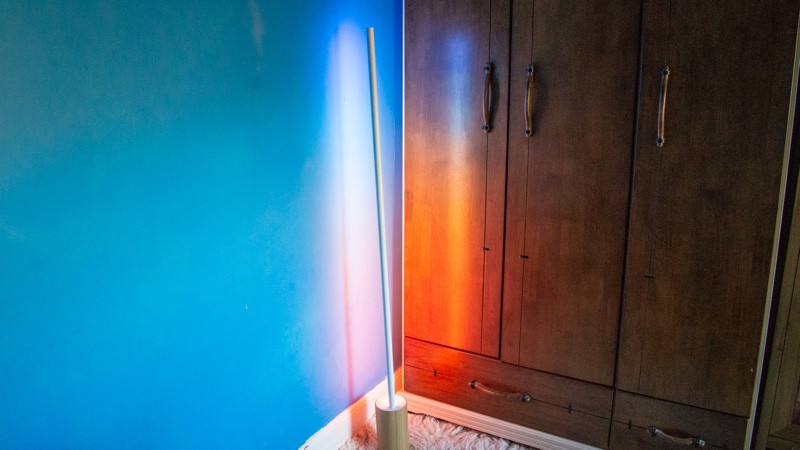
There’s a choice of lamp bases. Here, you can see the Oak variant, but there are slightly cheaper plain white or black versions available.
Which ones best for you will depend on where you want to put the lamp: if you can’t see the base, then the cheaper ones will do; if you can, then the oak effect choice may look better.

As with other recent Hue lights, the Signe Floor Lamp can be controlled via Bluetooth or Zigbee if you have a Hue Bridge. The latter gives more control and features, as well as compatibility with a wider range of wireless remotes, and it’s how I set the product up.
The lamp should be discoverable when it’s first turned on; if it’s not, the pairing code is printed on the label near the power supply, and this can be typed into the app.
After that, the lamp appears like any other Hue light and can be added to a group or room.
Hue Gradient Signe Floor Lamp: App and features
In a room, the Hue Gradient Signe Floor Lamp works and acts like all other lights and bulbs in your Philips Hue system.
If you’ve paired a wireless switch, such as the Hue Tap Dial, you can toggle the light on and off, adjust brightness and cycle between any scenes you have set.
Having such a choice for wireless remotes is brilliant, but it would be nice to have physical control of the lamp itself.
After all, standing lamps like this are often used at specific times: creating a cosier atmosphere or acting as a reading light, for example.
There’s a workaround: you can place the Hue Gradient Signe Floor Lamp in a Hue Room by itself and then have a dedicated control paired to it. For whole room control, you can create a Hue Zone that contains the lamp and any other lamps you want to control.
Inside the app, the main point of difference between the Signe and regular Hue lights is how the light segments are controlled.
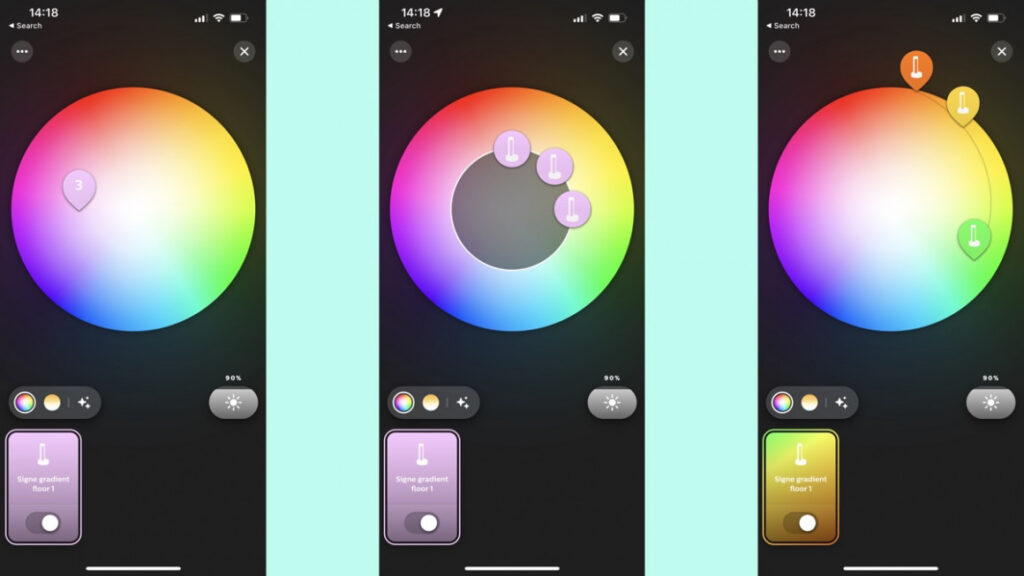
Thanks to the Gradient light strip used, there are three distinct light segments on this strip. They can be controlled as one, giving the Signe Floor Lamp a solid color or color temperature, but press and hold the light’s icon, and it splits the lamp into three bulbs, connected together.
This makes it very clear which part of the segment you’re controlling, so you can swipe and choose different colors for each lamp area. It’s far easier doing this than the equivalent control in the Govee Lyra app.
There are then all of the standard and motion scenes to pick from, which you can get from the gallery or create yourself.
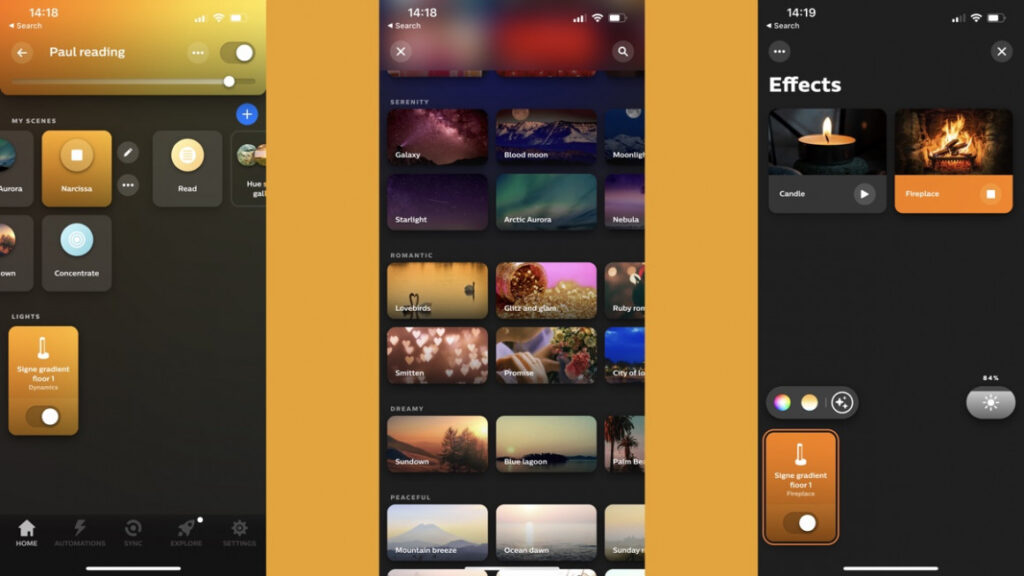
As the light is part of the Hue system, it’s compatible with Amazon Alexa, Google Assistant, HomeKit, SmartThings and more.
With all external systems, you can select scenes and solid colors, but you can’t control the segments separately.
Hue Gradient Signe Floor Lamp: In use
As you would expect from a Hue product, the Signe Floor Lamp is a high-quality lamp. It’s designed to face a wall, reflecting light off of it rather than shining light directly into a room. This helps create a different ambience.
Where there’s a dull section of wall or a dingy corner, the Hue Gradient Signe Floor Lamp can add that bit of life to a room, painting a wall with light.
It’s the color that truly makes this lamp stand out. Excellent color blending across the three segments lets the Signe Floor Lamp broadcast a blend of colors that mix and match to perfection.
While the ambience is one thing, the Hue Gradient Signe Floor Lamp is bright enough to be a utility light, too. Placing it behind a chair and using one of the more standard Hue lighting colors (Concentrate or Read, for example), the lamp is bright enough to read by and work, too.
That’s important, as buying a light as expensive as this just to create a light show could be hard to justify; buying a light that can add ambience and is useful as an actual light is much easier to do.


